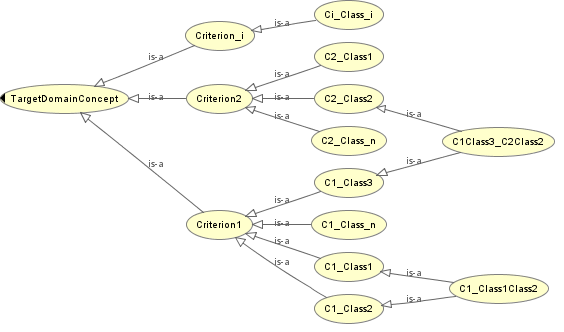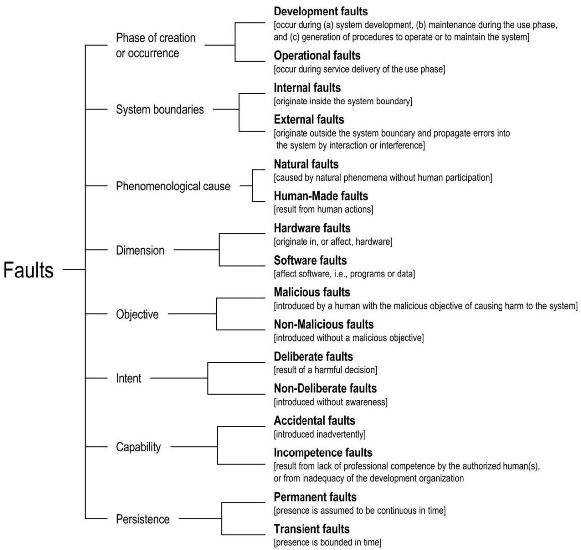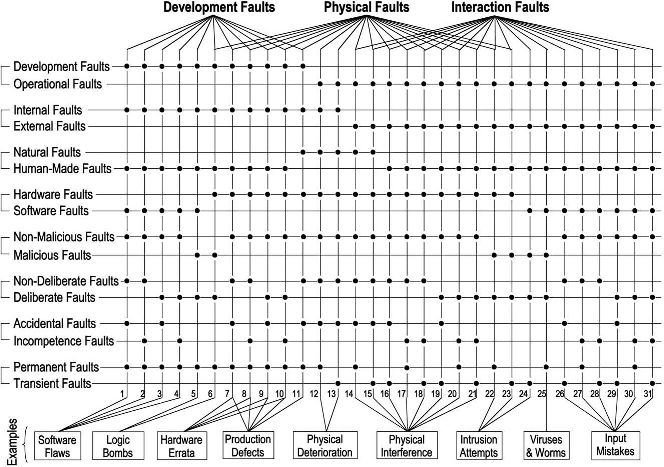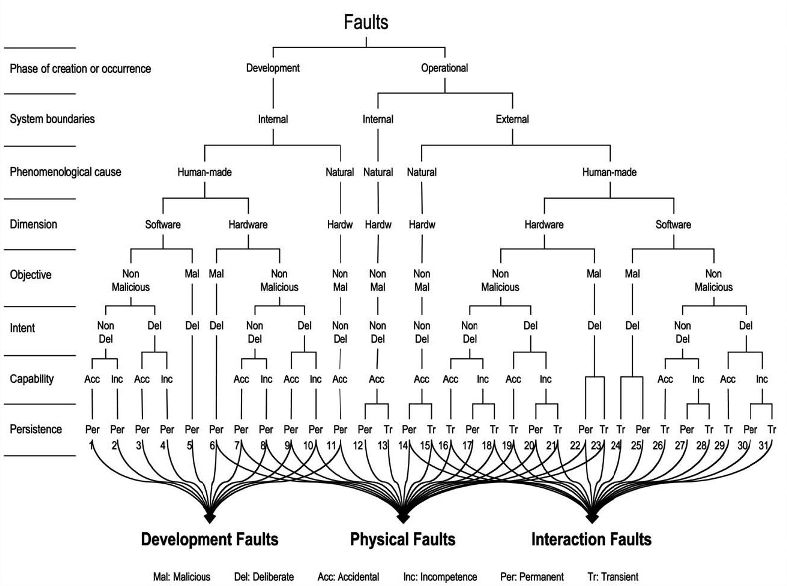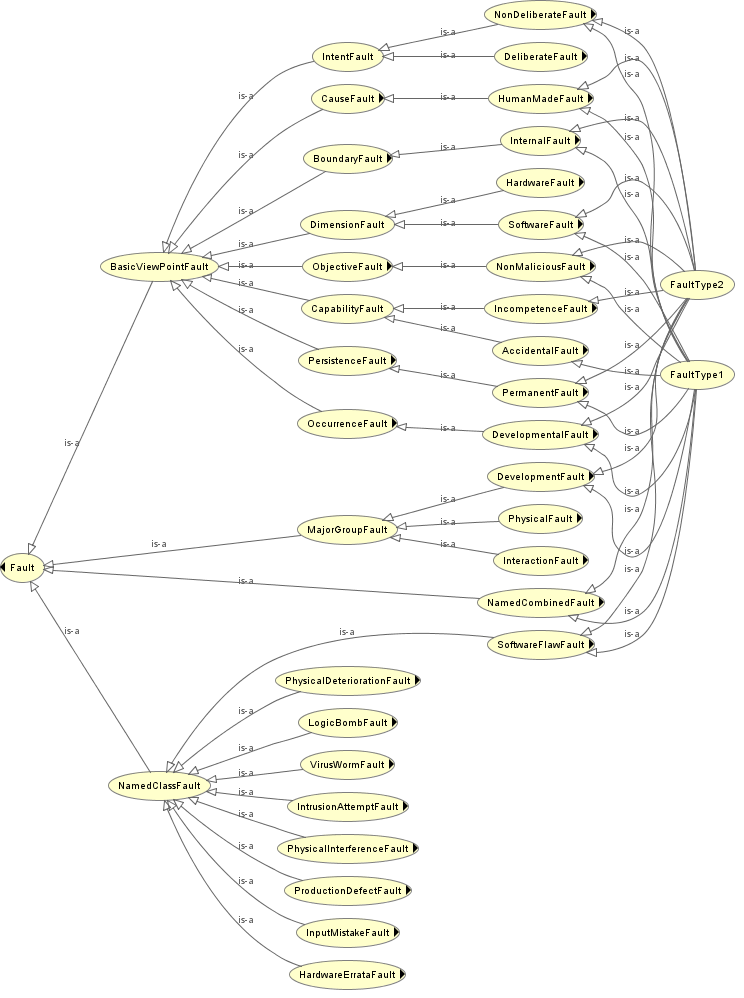Submissions:View Inheritance
From Odp
Current revision (18:15, 5 September 2010) (view source) |
|||
| (16 intermediate revisions not shown.) | |||
| Line 1: | Line 1: | ||
{{Architectural_OP_Proposal_toolbar}} | {{Architectural_OP_Proposal_toolbar}} | ||
| - | {{ | + | {{Graphical representation header}} |
| + | {{Graphical representation | ||
|ImageName=Fig_view_inheritance_structure.png | |ImageName=Fig_view_inheritance_structure.png | ||
}} | }} | ||
| Line 7: | Line 8: | ||
|SubmittedBy=BenedictoRodriguezCastro, HughGlaser | |SubmittedBy=BenedictoRodriguezCastro, HughGlaser | ||
|Author=Benedicto Rodriguez-Castro, Hugh Glaser | |Author=Benedicto Rodriguez-Castro, Hugh Glaser | ||
| + | |Domain=General | ||
}} | }} | ||
{{Architectural OP Description Template | {{Architectural OP Description Template | ||
| Line 19: | Line 21: | ||
}} | }} | ||
{{Architectural OP Example Template | {{Architectural OP Example Template | ||
| - | |Problem= | + | |Problem=List of figures: |
| - | [ | + | * Figure 2. The elementary classes of ''Fault'' in Avizienis et al. <nowiki>[1]</nowiki> used in the ReSIST KB ontology. |
| + | * Figure 3. Matrix representation of Fault in Avizienis et al. <nowiki>[1]</nowiki> used in the ReSIST KB ontology. | ||
|Solution=Figure above in particular, shows a matrix representation of all types of faults which may affect a system during its life. Implicitly, the figure reveals several alternative criteria for the classification of faults: | |Solution=Figure above in particular, shows a matrix representation of all types of faults which may affect a system during its life. Implicitly, the figure reveals several alternative criteria for the classification of faults: | ||
| Line 28: | Line 31: | ||
* A third criterion is implicit at the top row, representing the three major partially overlapping groupings of faults: ''Development'', ''Physical'' and ''Interaction''. | * A third criterion is implicit at the top row, representing the three major partially overlapping groupings of faults: ''Development'', ''Physical'' and ''Interaction''. | ||
* A fourth criterion can be seen at the bottom row, labeled ''Examples'', containing nine illustrative examples of fault classes. | * A fourth criterion can be seen at the bottom row, labeled ''Examples'', containing nine illustrative examples of fault classes. | ||
| + | |Consequences='''Inter- and Intra-criterion Multiple Inheritance.''' | ||
| + | There is an interesting feature regarding the types of multiple inheritance relations that can take place in the context of a View Inheritance pattern. These types of multiple inheritance relationships can be characterized as: | ||
| + | * '''Inter-criterion''', when the parent classes involved in the multiple inheritance relation are subclasses of different abstraction criteria. The class ''C1Class3_C2Class2'' in Figure 1 is an example of this type of inheritance because one of its parent classes, ''C1_Class3'', is a refining concept of ''Criterion1'' and the other parent class, ''C2_Class2'', is a refining concept of ''Criterion2''. | ||
| + | * '''Intra-criterion''', when the parent classes involved in the multiple inheritance relation are subclasses of the same abstraction criterion. The class ''C1_Class1Class2'' is an example of this type of inheritance because all of its parents classes, ''C1_Class1'' and ''C1_Class2'', are refining concepts of the same criterion, ''Criterion1''. | ||
| + | * '''Intra- and inter-criterion''', when there are at least two parents involved in the relation that are subclasses of the same abstraction criterion and there is at least one more different parent that is a subclass of a different abstraction criterion. An example of this type of inheritance is trivial to extrapolate from the composition of the previous two. | ||
}} | }} | ||
{{Architectural OP Reference Template | {{Architectural OP Reference Template | ||
| - | |RelatedTo=Normalization, | + | |Origin=Object Oriented: |
| + | * Meyer, B.: Object-Oriented Software Construction (Book/CD-ROM) (2nd Edition). Prentice Hall PTR (March 2000) | ||
| + | |||
| + | Ontology: | ||
| + | * Rector, A.L.: Modularisation of domain ontologies implemented in description logics and related formalisms including owl. In: K-CAP '03: Proceedings of the 2nd international conference on Knowledge capture, New York, NY, USA, ACM (2003) 121--128 | ||
| + | |RelatedTo=Submissions:Normalization, Submissions:Partition, Submissions:ClassAsPropertyValue, Submission:MultipleInheritance | ||
| + | }} | ||
| + | {{Additional information header}} | ||
| + | {{Include Image | ||
| + | |ImageName=Fig_avizienis_fault_4.jpg | ||
}} | }} | ||
| + | {{Include Image | ||
| + | |ImageName=Fig_avizienis_fault_5a.jpg | ||
| + | }} | ||
| + | |||
| + | {{Include Image | ||
| + | |ImageName=Fig_avizienis_fault_5b.jpg | ||
| + | }} | ||
| + | |||
| + | {{Include Image | ||
| + | |ImageName=Fig_fault_f1_f2_asserted_prot4x.png | ||
| + | }} | ||
{{Scenarios about me}} | {{Scenarios about me}} | ||
{{Reviews about me}} | {{Reviews about me}} | ||
| + | {{Modeling issues about me}} | ||
| + | {{My references}} | ||
Current revision

| If you are a member of quality committee please visit the
If you are author of this proposal or you want to contribute to this pattern's review, you can: specify if this revision takes in account any of the review(s) In general, it could be useful to visit the evaluation section to have information about the evaluation process of this proposal Current revision ID: 9979 |
Graphical representation
Diagram
General information
| Name | View Inheritance |
|---|---|
| Also known as | |
| Author(s) | Benedicto Rodriguez-Castro, Hugh Glaser |
| Domain (if applicable) | General |
| Submitted by | BenedictoRodriguezCastro, HughGlaser |
Description
| Problem description | There are ontology domain concepts that are difficult to represent due to the complexities in their definition and the presence of multiple alternative criteria to classify their abstractions. |
|---|---|
| Solution description | Introduce the following types of classes:
|
| Implementation workflow | |
| Reusable component |
Example
| Problem example | |
|---|---|
| Solution example | Figure above in particular, shows a matrix representation of all types of faults which may affect a system during its life. Implicitly, the figure reveals several alternative criteria for the classification of faults:
|
| Consequences | Inter- and Intra-criterion Multiple Inheritance.
There is an interesting feature regarding the types of multiple inheritance relations that can take place in the context of a View Inheritance pattern. These types of multiple inheritance relationships can be characterized as:
|
Pattern reference
| Origin | Object Oriented:
Ontology:
|
|---|---|
| Known use | |
| Reference | |
| Related ODP | Submissions:Normalization, Submissions:Partition, Submissions:ClassAsPropertyValue, Submission:MultipleInheritance |
Additional information
Scenarios
No scenario is added to this Content OP.
Reviews
There is no review about this proposal. This revision (revision ID 9979) takes in account the reviews: none
Other info at evaluation tab
Modeling issues
There is no Modeling issue related to this proposal.
References

